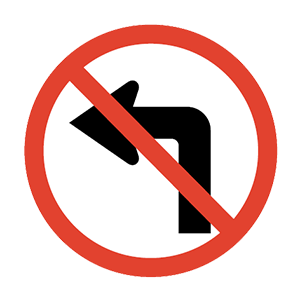2026 Rhode Island Permit Test 18
The following questions are from real DMV written tests. These are some of the actual permit questions you will face in Rhode Island. Each permit practice test question has three answer choices. Select one answer for each question and select "grade this section." You can find this button at the bottom of the drivers license quiz. For a complete list of questions and answers for Rhode Island please visit https://cheat-sheets.dmv-written-test.com/en/rhode-island/car.
Number of Tests
Number of Question
Passing Score
1. If you come to an intersection controlled by a flashing yellow light, you must:
Explanation
A flashing yellow traffic light means drivers must slow down, be more aware, and proceed with caution. Be alert to crossing traffic and pedestrians.
2. Yield also means stop if you cannot merge safely into the flow of traffic.
Explanation
In a situation requiring you to yield the right-of-way, you must also stop if you cannot merge safely into the flow of traffic.
3. If traffic signals at an intersection are not functioning due to a power outage:
Explanation
If a traffic light at an intersection is not functioning due to a power outage, yield to other drivers in the same manner as you would when approaching a four-way stop. When it is your turn, proceed through the intersection with caution.
4. When driving under icy or snowy conditions, which driving technique will help drivers avoid crashes?
Explanation
Reduce your speed when roads are snow-covered or icy. Doing this and increasing your following distance are the most important techniques for avoiding crashes under snowy or icy conditions.
5. Which of the following describes the thinking of defensive drivers?
Explanation
Driving defensively means anticipating potential errors made by others and preparing to compensate for their mistakes.
6. This sign means:

Explanation
This sign means drivers cannot make a left turn. It is unsafe and unlawful to make a left turn at an intersection where this sign is posted.
7. At an intersection with a yield sign, you:
Explanation
When approaching a yield sign, drivers must give the right-of-way to traffic already in the lanes that they intend to enter or cross. Drivers should be prepared to stop when approaching a yield sign but may continue without stopping if there is no conflicting traffic.
8. When driving in fog, you should use your:
Explanation
If you must drive in foggy conditions, you should use your low beam headlights, as well as your fog lights, if your vehicle has them. High beams direct their light upwards, where it can bounce off the fog and into your eyes, reducing visibility even more.
Ranked by best match
